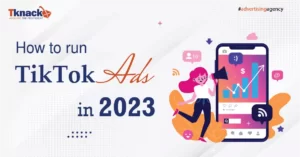Content Gating Strategy
One tactic used in strategic digital marketing is content gating, which is asking consumers to provide certain information to access online material. The convergence of content strategy, SEO (Search Engine Optimisation), and content gating strategy is examined in this article. Material gating is a dynamic strategy that is emerging in the field of strategic digital marketing. It involves prompting customers to supply specific information in exchange for accessing online material.
The combination of content strategy, SEO, and content gating tactics is explored in depth in this article. When the intricacies of these components are broken down, marketers who want to maximise their online presence must integrate them seamlessly. This investigation highlights the inherent relationship between content gating and more general content strategies while also illuminating the practice’s complex nature. The way these elements interact and how important SEO is to increasing awareness highlight the need of having a comprehensive understanding. Managing this convergence gives marketers the tools they need to manage the changing digital landscape.

Content Gating Definition:
The practise of requiring user information, including email addresses, to access specific online material is known as content gating. By enabling focused engagement, this regulated access facilitates a useful exchange between consumers and content creators.
Content Gating's Significance in Digital Marketing
In digital marketing, content gating is essential since it makes lead generation, audience segmentation, and data collecting possible. Marketers may utilise it as a dynamic tool to customise interactions, enhance user experiences, and create a high-quality database for upcoming engagement.
Understanding Content Gating
Content gating is a digital marketing strategy in which visitors cannot access some online content unless they complete a predetermined action, usually filling out a form or entering their contact information.
Definition and Concept:
The goal of content gating is to create a database of qualified leads and interact with a more niche audience by trading valuable material for user data. The fundamental tenet of the notion is that users are prepared to swap their personal information for premium content, resulting in a win-win situation.
How Regular Content Distribution Differs from Content Gating:
In contrast to standard content distribution, which tries to reach a large audience without any obstacles, content gating adds a gatekeeper—a prerequisite that consumers must meet to view the information. This gatekeeper is frequently a request form.

Content Gating's Advantages
Creation of Leads
One effective technique for generating leads is content gating. Before granting access to premium content, companies can draw in and collect a steady flow of potential customers by requesting personal information from consumers. By using a tailored strategy, it is ensured that those who show interest in the gated content are more likely to be sincere customers of the provided goods or services.
Splitting the Audience
The capacity of content gating to enable accurate audience segmentation is a major benefit. Businesses learn important information about users’ tastes and interests when they voluntarily provide personal information to access content. Because of this fine-grained data, tailored content strategies can be developed, guaranteeing that the appropriate messages are seen by the appropriate audience groups.
Information Gathering and Evaluation
Content gating facilitates extensive data collecting in addition to lead creation. Businesses can analyse a wealth of data from the information obtained during the gating process. With the help of this data-driven strategy, marketers can improve user experiences, hone their content strategies, and make wise choices based on insights gained in real time.
Creating a Reputable Email List
Establishing content gating is essential to developing a superior email list. Businesses can communicate directly with their audience by requesting users to enter their email addresses. This well selected email list turns into a useful tool for running focused email marketing campaigns, nurturing prospects, and building enduring connections with clients.
Types of Gated Content
In the changing world of digital marketing, content gating offers companies a way to harness valuable content for expansion. Different audience tastes are catered to by the variety of gated content categories. In-depth market insights are provided by whitepapers and eBooks, while the need for online learning is met by webinars and online courses. Real-world proof is used in reports and case studies to establish credibility, and having exclusive access to premium content gives an air of exclusivity. When gated, tools and resources provide useful answers. It is essential to incorporate content gating into a more comprehensive SEO strategy, which calls for rigorous evaluation of the target demographic, the value of the material, and SEO optimisation. Effective case studies provide useful standards by demonstrating successful tactics. Using keywords strategically and staying away from typical traps are crucial to balancing SEO and content gating.

Content Gating Strategy:
Understanding Your Audience
Comprehending your target audience is essential for developing an effective content gating plan. Start by developing thorough buyer personas that accurately capture the traits, inclinations, and difficulties of your intended market. This fundamental stage guarantees that the content that is gated fits your potential leads’ demands perfectly. Furthermore, try to comprehend user intent, predict the precise information that your audience is looking for, and modify your gated content appropriately.
Selecting Appropriate Content to Gate
A comprehensive content gating strategy relies on carefully chosen material. Find valuable material that speaks to the interests of your audience and demonstrates your area of expertise. It’s a fine art to strike a balance between free and gated content; provide worthwhile information for free to build confidence and trust while keeping premium
Overcoming Challenges in Content Gating
Navigating user resistance, finding a careful balance with SEO concerns, and guaranteeing GDPR and privacy standards compliance are all necessary to overcome content gating problems. Because gating makes it more difficult to obtain content that they want, users frequently oppose it. Maintaining exposure and ranks requires balancing SEO concerns, as overly restrictive gating might have a detrimental effect on search engine optimisation. Furthermore, maintaining strict compliance with GDPR and privacy laws is essential to protecting user data and fostering confidence. Crucial tactics include putting in place open data policies, getting explicit user agreement, and providing distinct value propositions. To effectively tackle these obstacles, a sophisticated strategy that places equal emphasis on user experience, search engine optimisation, and legal compliance is needed.

Real-world Content Gating Strategy
When analysing content gating tactics in the real world, Company A’s campaign is a prime example of successful execution. Company A had a focused approach, providing audience-focused gated material that was valued. They increased lead generation and attained excellent conversion rates by making the advantages of viewing the information evident and providing a flawless user experience.
On the other hand, examining content gating missteps offers insightful teaching points. Examples of situations when businesses miscalculated audience expectations, imposed unduly severe gating, or fell short of providing the promised value provide valuable information about potential hazards. Recognising these mistakes highlights how crucial it is to keep transparency, match gated content to audience demands, and iteratively improve techniques based on user input. These real-world instances highlight the complexity of content restriction.
Integrating Content Gating with Social Media Plans
Optimising engagement and conversions through dynamic content gating strategies is possible when social media programmes are integrated. Creating intriguing teasers and snippets to pique interest is a key component of using social media channels for gated content promotion. Businesses may generate excitement about their gated content by carefully planning their posting schedules, employing pertinent hashtags, and encouraging participatory conversations. This strategy fosters exclusivity while simultaneously broadening the audience.
It’s critical to design a smooth user experience from social media to gated content. User experience is improved by using call-to-action links that are obvious and compelling, making landing pages mobile-friendly, and reducing sign-up friction. Maintaining consistency and reinforcing the value proposition is ensured by coordinating the messaging across gated content and social media.
Measuring and Analysing Content Gating Performance
To improve tactics and get the best outcomes, content gating performance measurement and analysis are essential. Key performance indicators for assessing the effectiveness of gated content include engagement levels, lead quality, and conversion rates. Measuring the proportion of people who make it past the gate successfully offers valuable information about the attraction of the content and the potency of the value proposition.
Deep analysis using analytics tools improves comprehension. Granular data on user behaviour, source attribution, and conversion channels can be found on platforms such as Google Analytics, HubSpot, or specialised marketing automation tools. Through an analysis of these data, marketers may pinpoint the advantages and disadvantages of their content gating approach. Continuous optimisation is made possible by this data-driven strategy, which guarantees that gated content not only draws in a sizable audience but also turns them into quality leads.

Future Trends in Content Gating
The combination of artificial intelligence (AI) and customization will influence future developments in content gating. In content gating, personalization and AI entail adjusting the gated experience according to user choices and actions. To provide more relevant and targeted content and increase user engagement and happiness, AI algorithms analyse user data. This pattern indicates a move towards content gating strategies that are more complex and user focused.
The future of content gating will be greatly influenced by changing customer expectations. Customers want more and more valuable material in return for their information, personalised to them.
Conclusion
Summarizing the key takeaways ultimately, the exploration of the complexities surrounding dynamic content gating reveals a significant collection of insights. An engaging digital experience is mostly composed of the skillful balancing act between burstiness and ambiguity, as well as the smart use of personalised content. These components are crucial since they not only draw in users, but also help to create engaging online experiences and encourage extended user interaction.
Look At Also: WHAT IS Amazon FBA Business
It is critical to stress the importance of dynamic content gating mechanisms in the digital environment. In a time when content creation that dynamically adjusts to user preferences is invaluable, understanding how to create content that does this is revolutionary. Content makers that understand dynamic content gating will have a significant impact on the future of online content as the digital space continues to grow.
Additional Resources
It is recommended to read more to gain a deeper understanding of the realm of dynamic content gating. You will gain a deeper grasp of this dynamic digital marketing strategy by reading the insightful essays and consulting with subject matter experts. For content makers navigating the complexities of dynamic content gating, titles covering user behaviour, personalised content production, and SEO optimisation provide a comprehensive arsenal.
Boost your dynamic content gating efforts
Increase the effectiveness of your dynamic content gating campaigns with well-thought-out improvements. Concentrate on improving the user experience via smooth integration and tailored interactions to increase the effectiveness of your efforts. You can more precisely modify your gated content by using advanced analytics to obtain information into user behaviour. Additionally, keep your content offerings optimised and constantly adjusted to meet changing client expectations. Utilise cutting-edge technologies, such artificial intelligence, to modify your gating techniques dynamically in real-time according to patterns of user involvement. You may improve user satisfaction, engagement, and the overall efficacy of your dynamic content gating efforts by matching your strategy to their preferences and providing constant value. Maintain flexibility, reactivity, and initiative to get the most out of this effective marketing tactic.

Frequently Asked Questions
Many organisations can benefit from content gating, but before putting this tactic into practise, it's important to evaluate the audience and type of material.
Positive user experiences are enhanced by offering unambiguous value, open communication, and a simple opt-in procedure.
Gating low-value content, requesting too much information, and undervaluing mobile optimisation are examples of common errors.
By drawing in a more involved audience, gated material can improve SEO when used thoughtfully. However, it is important to consider and lessen any potential bad effects.
Yes, users may become discouraged by numerous information demands. Take only the necessary data to protect user privacy.



